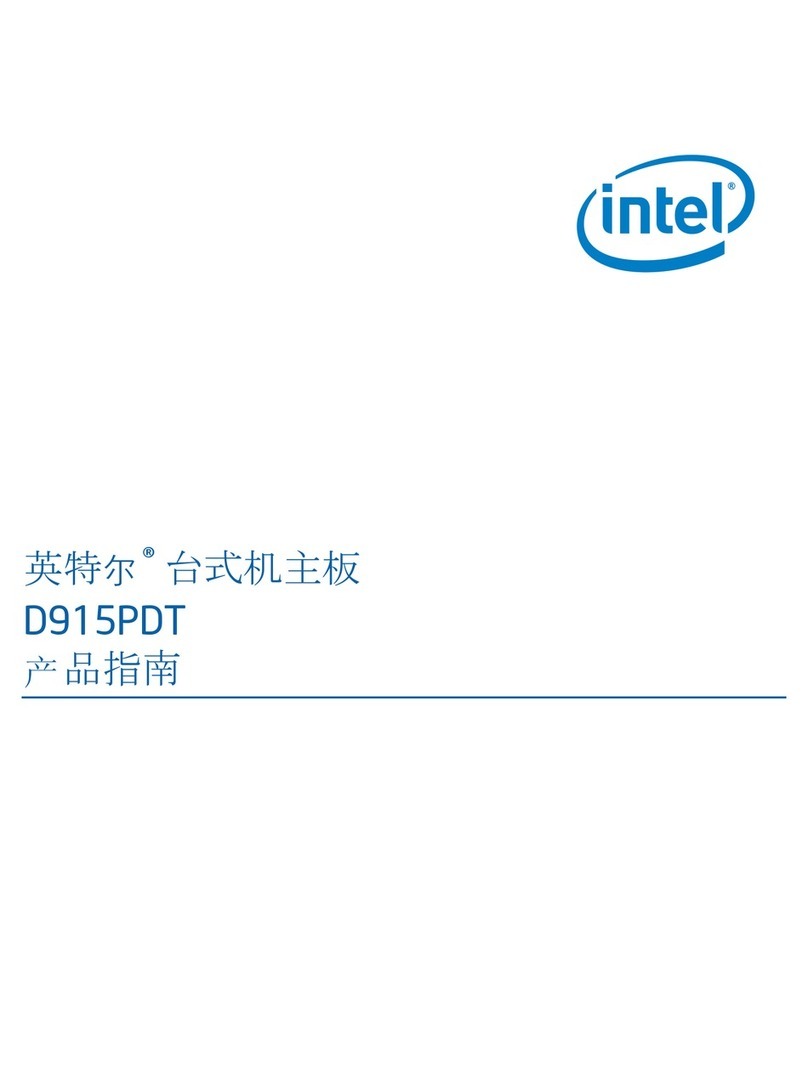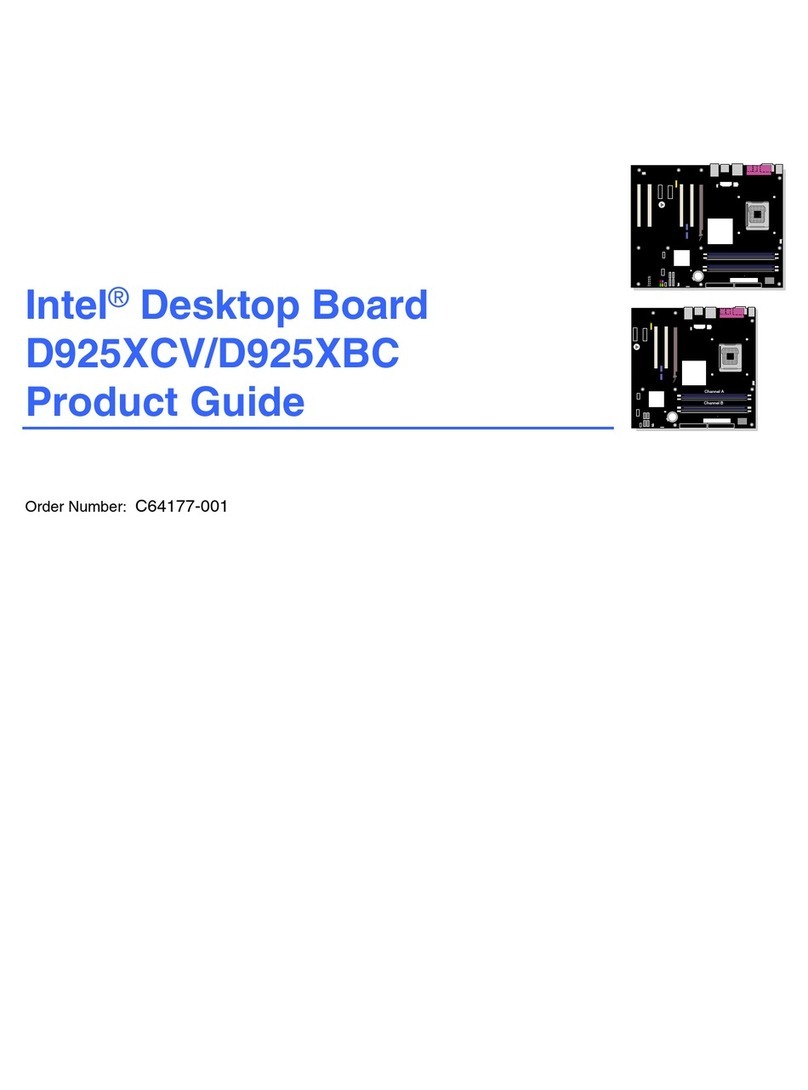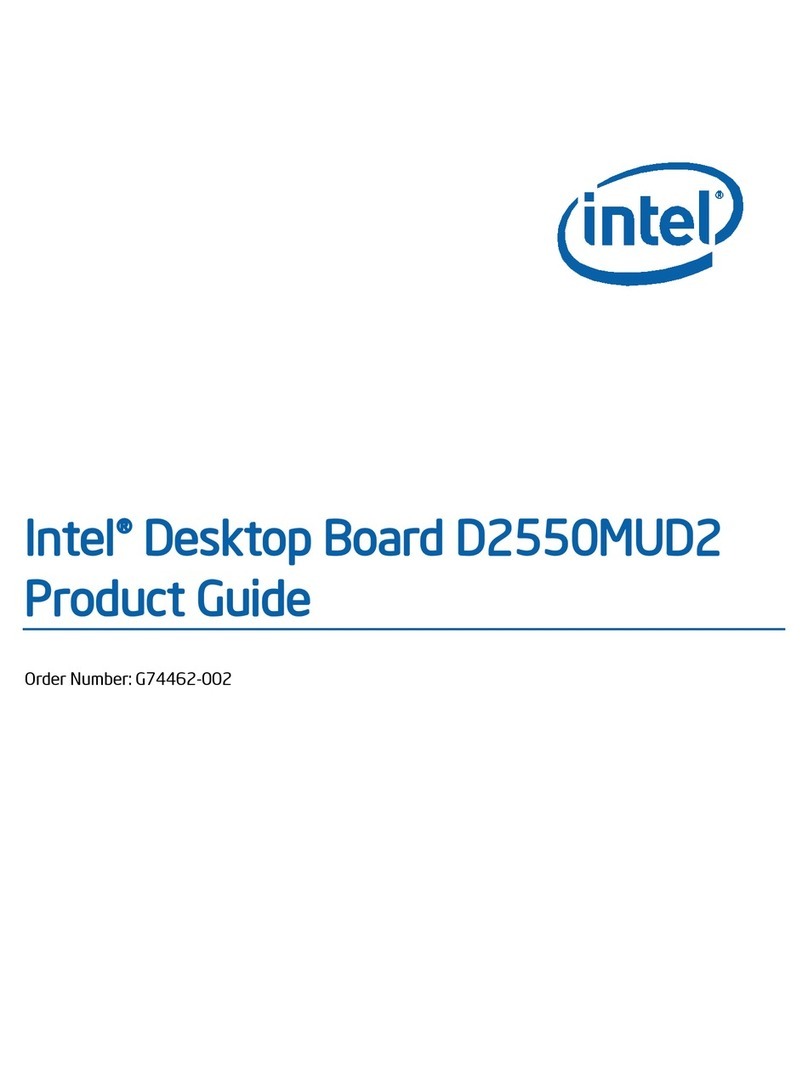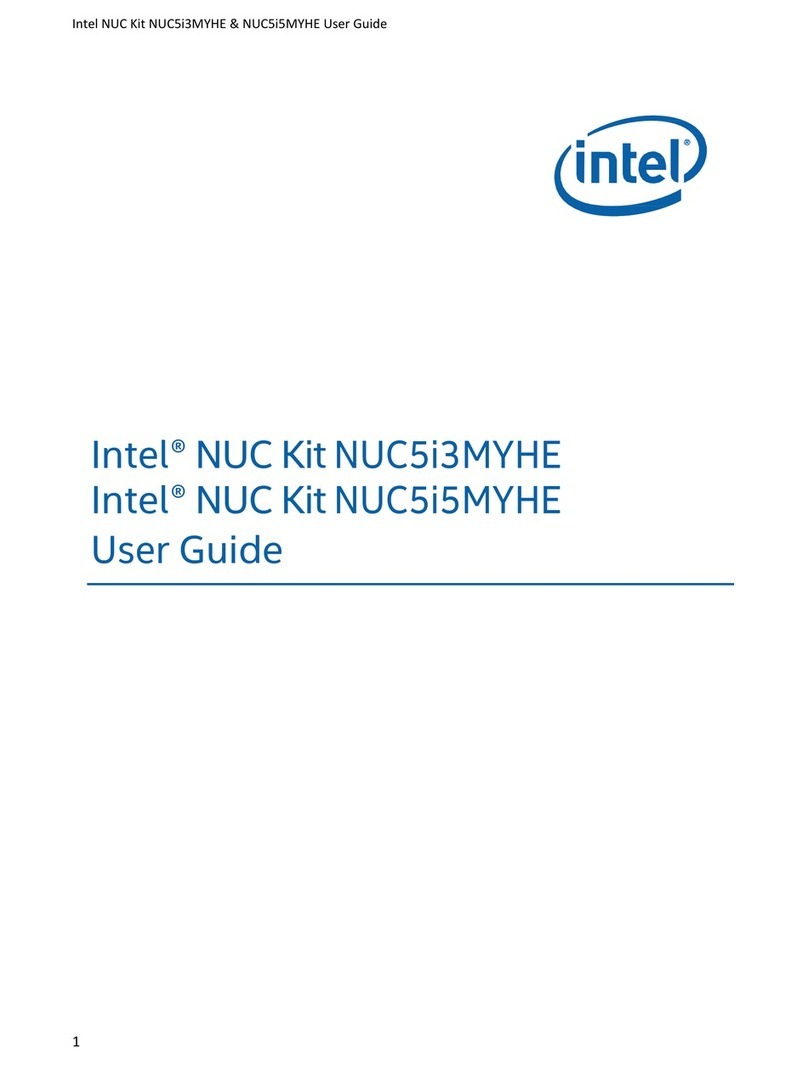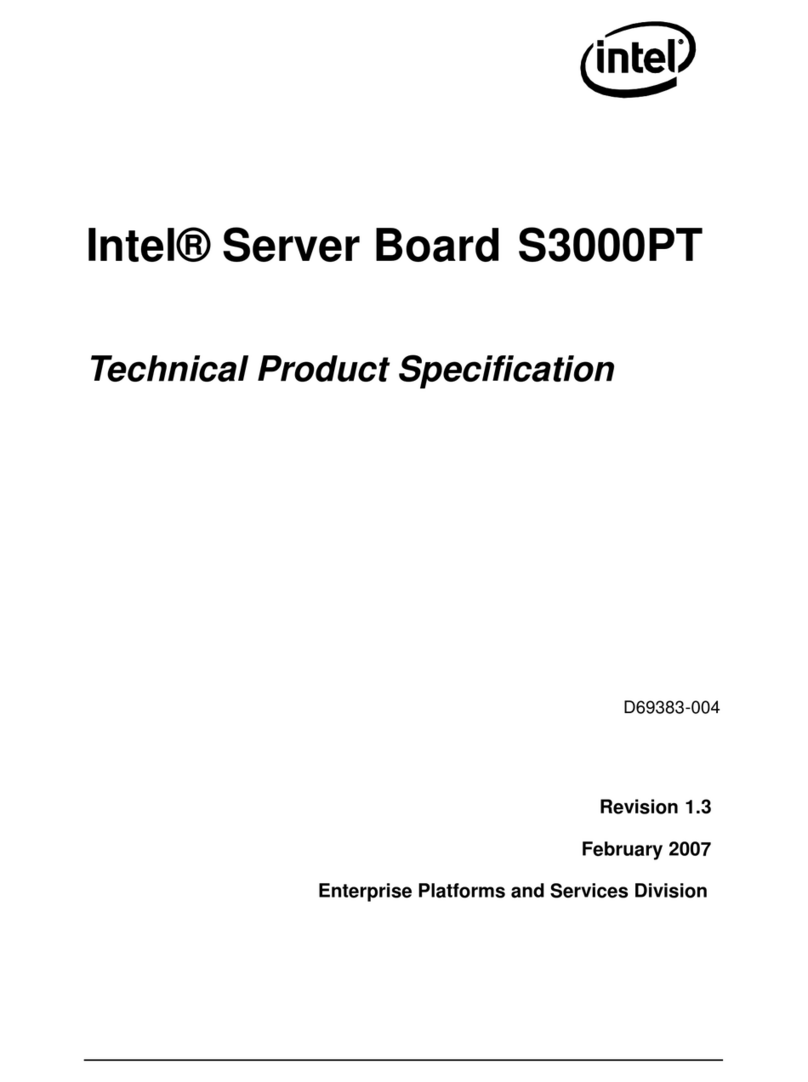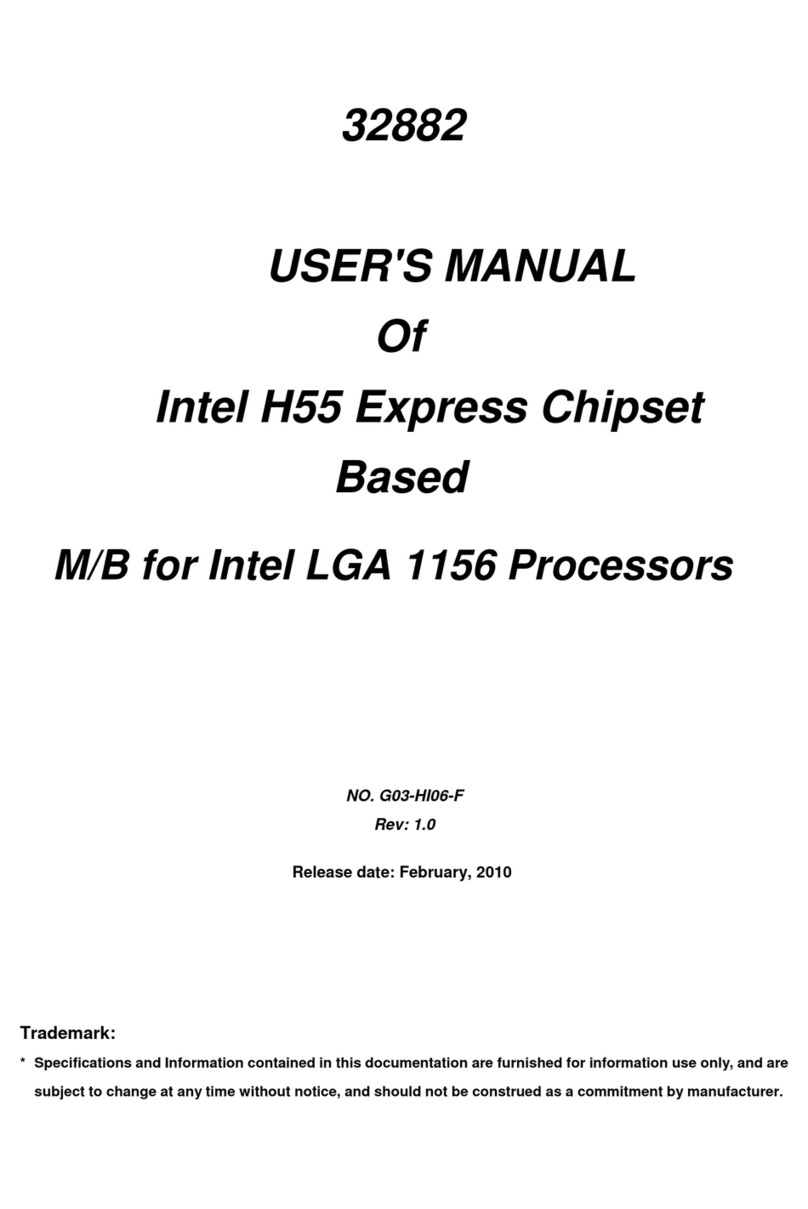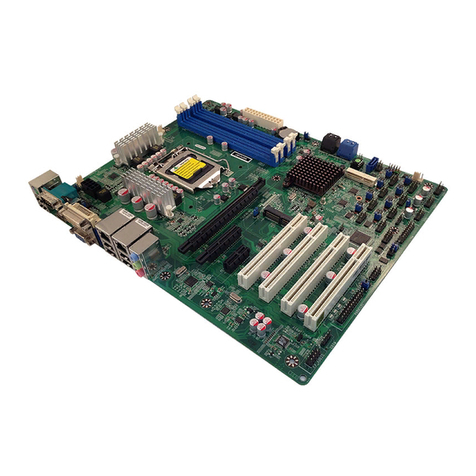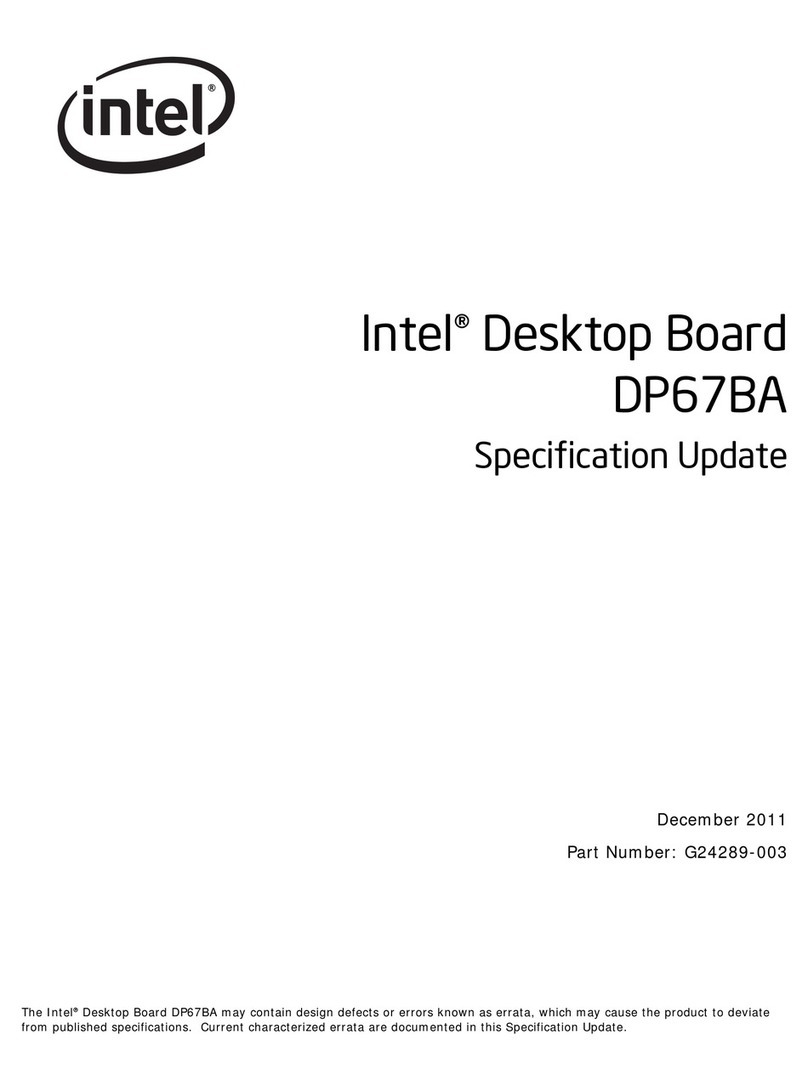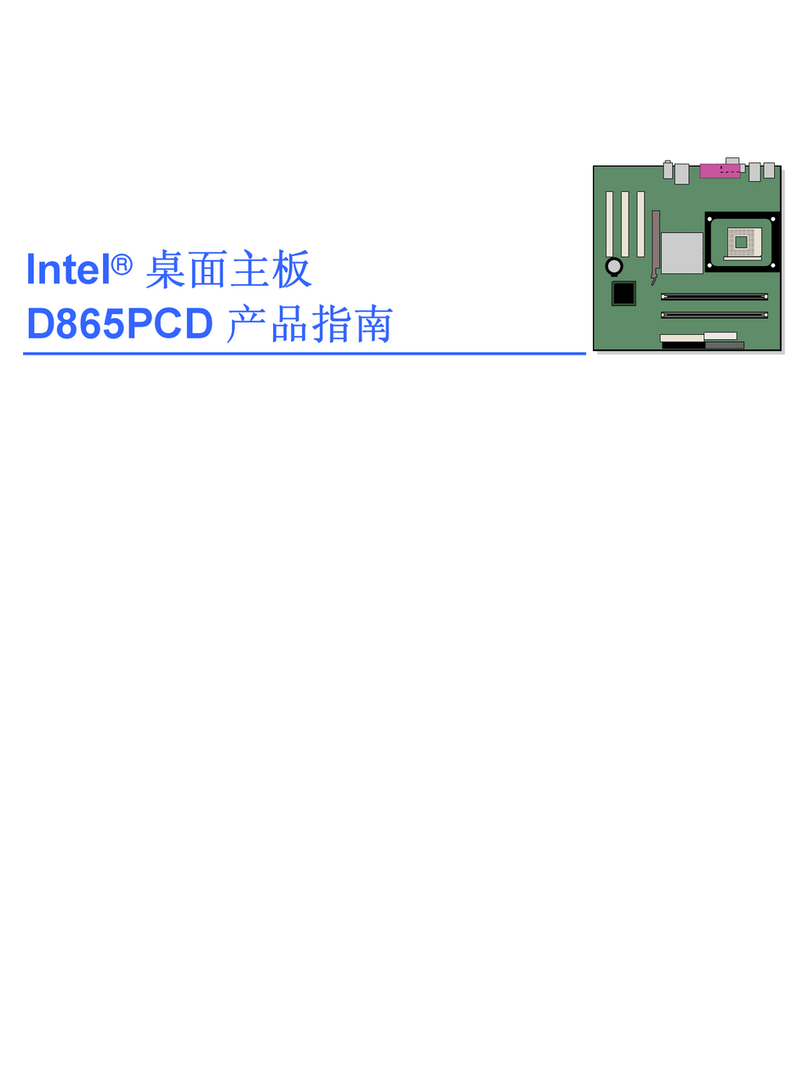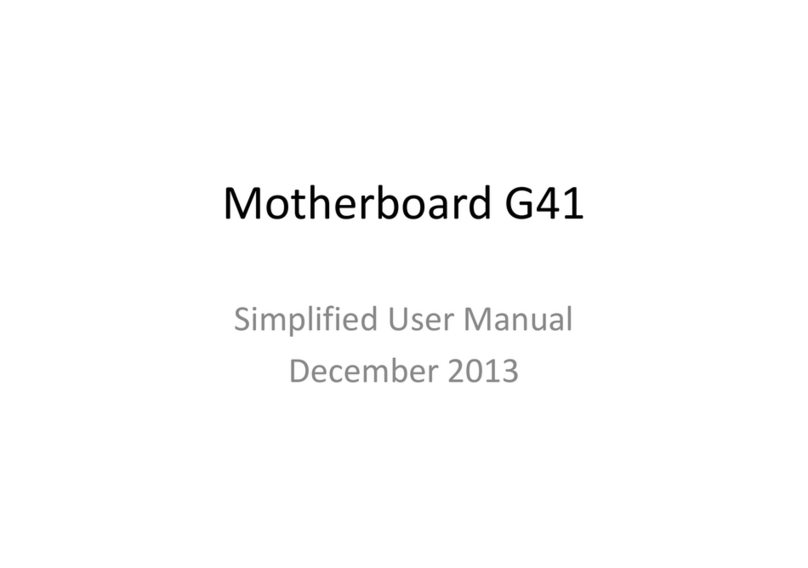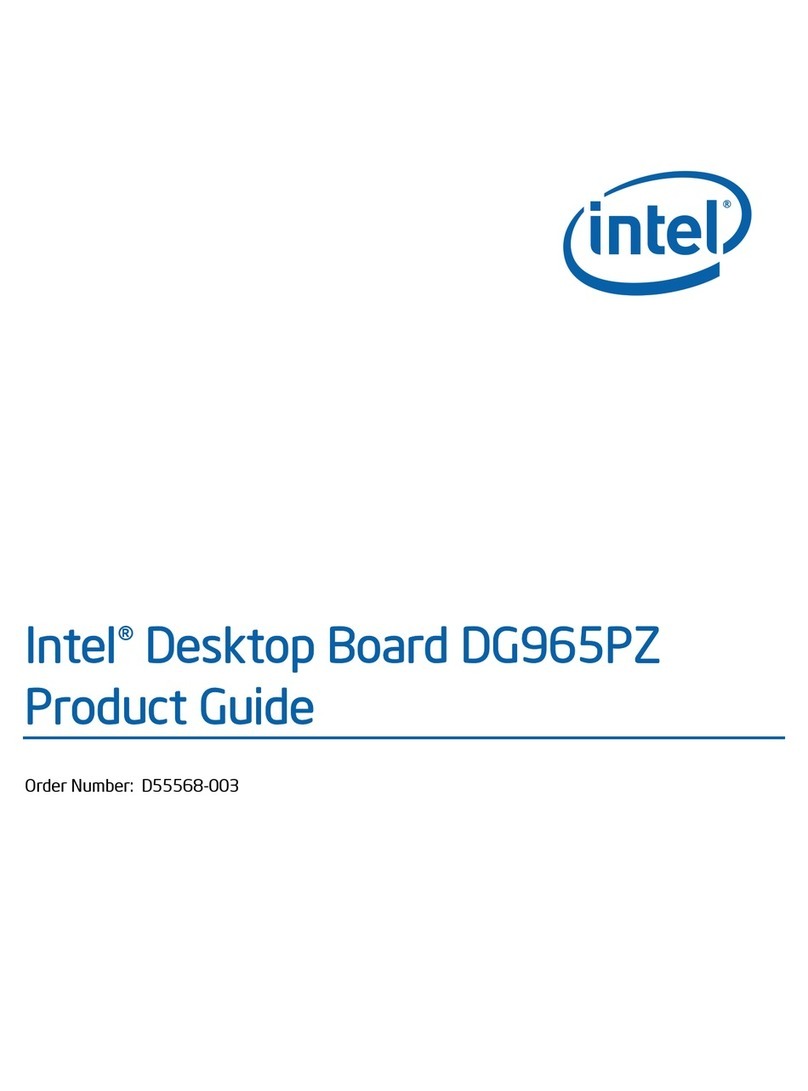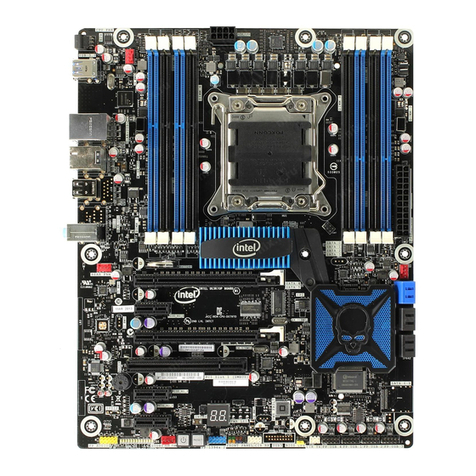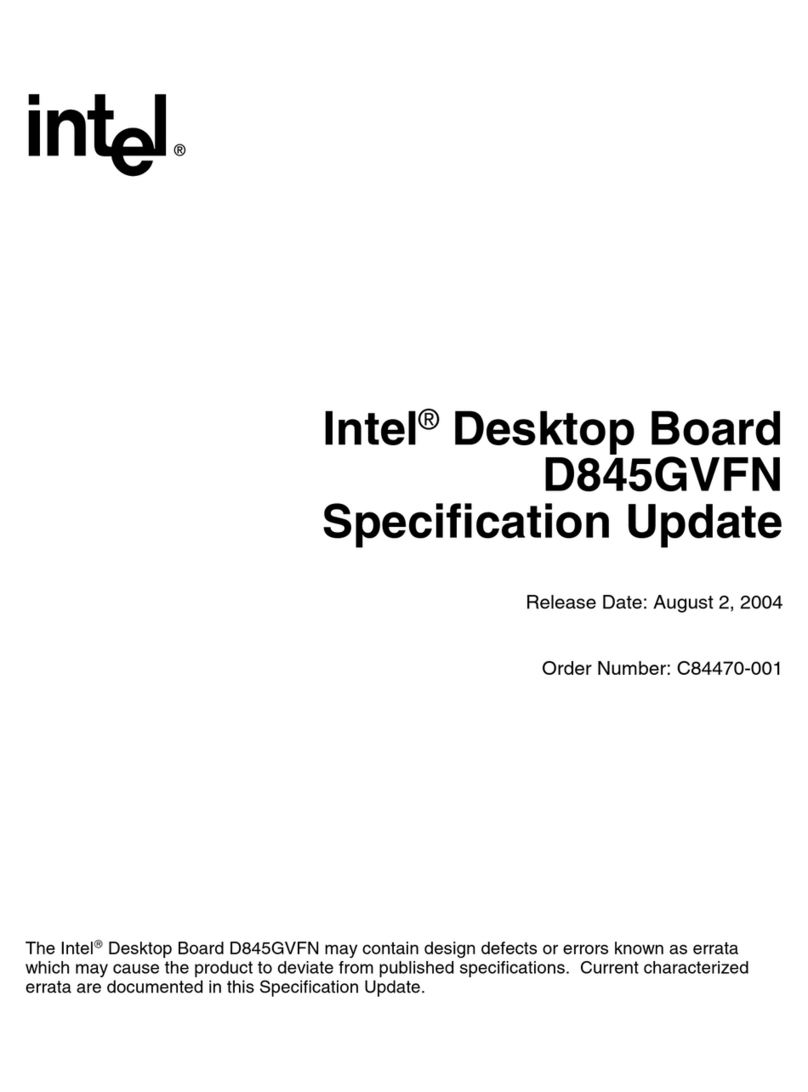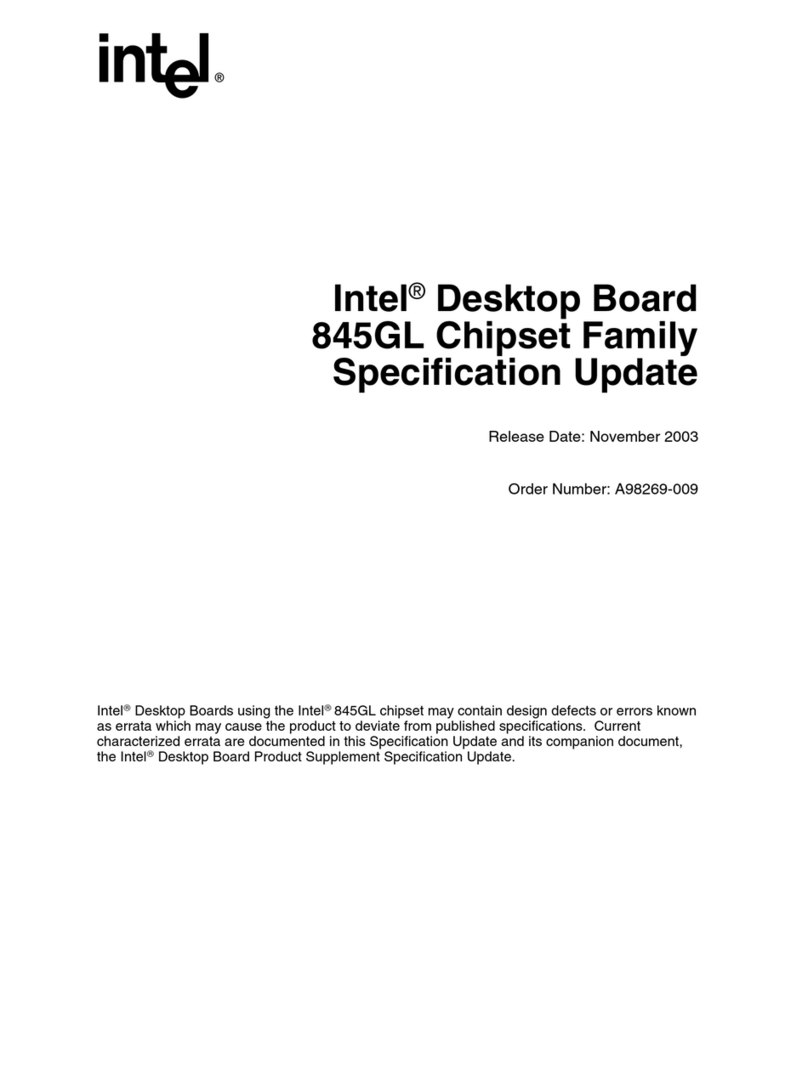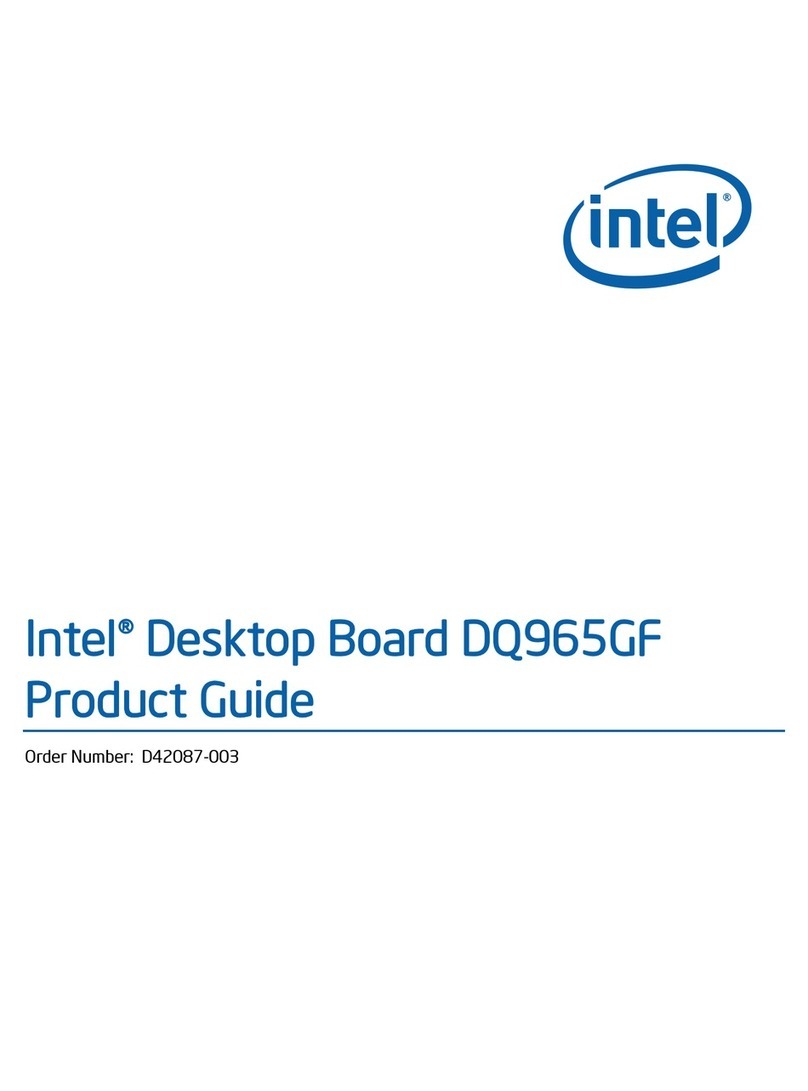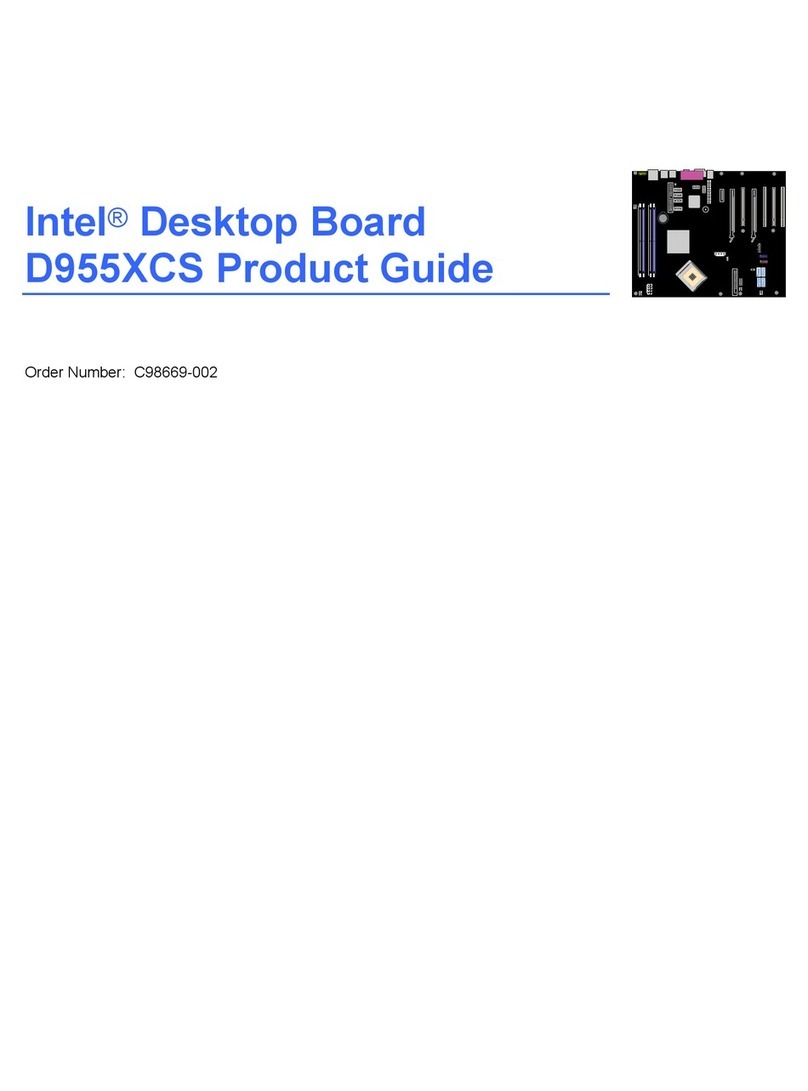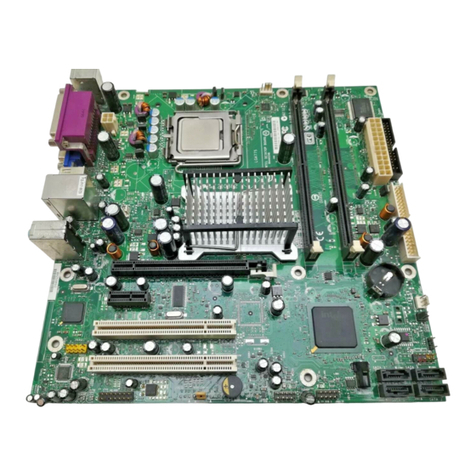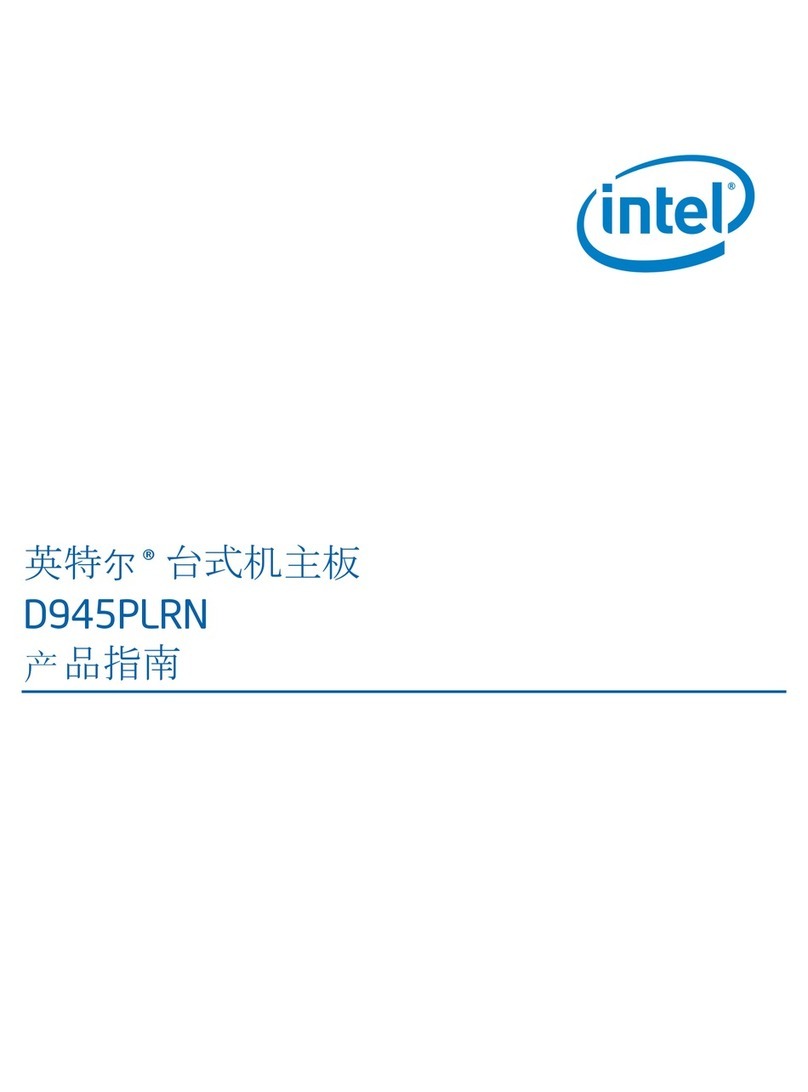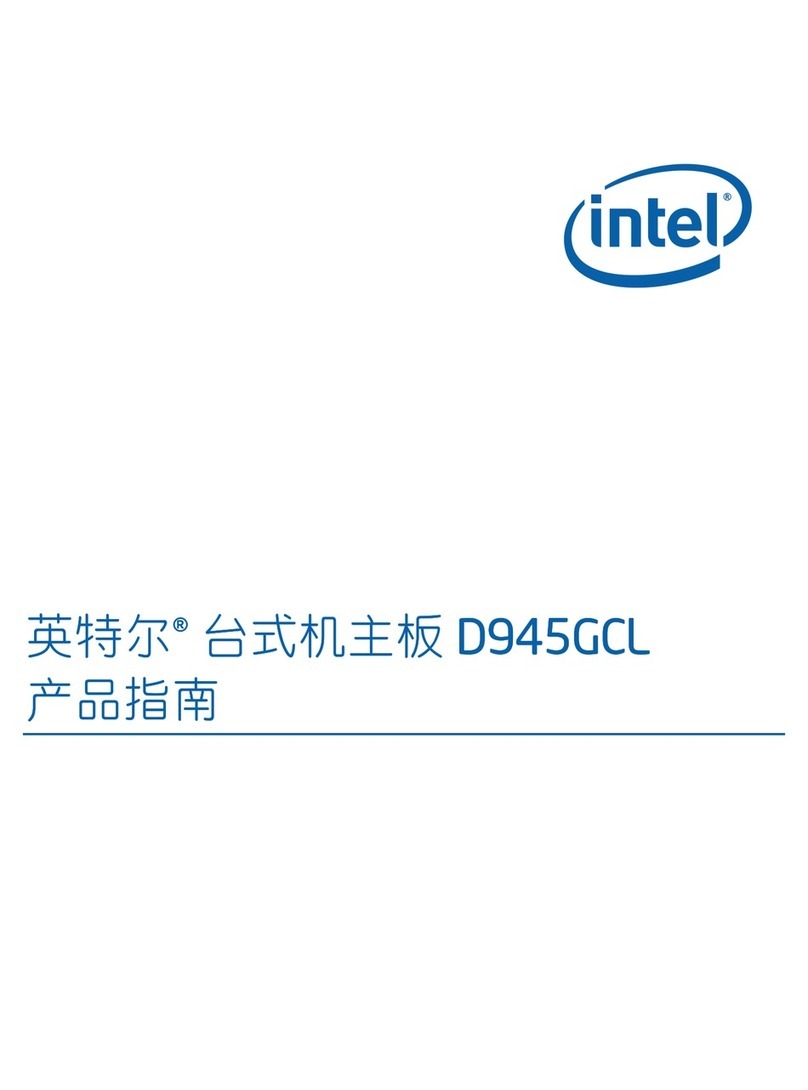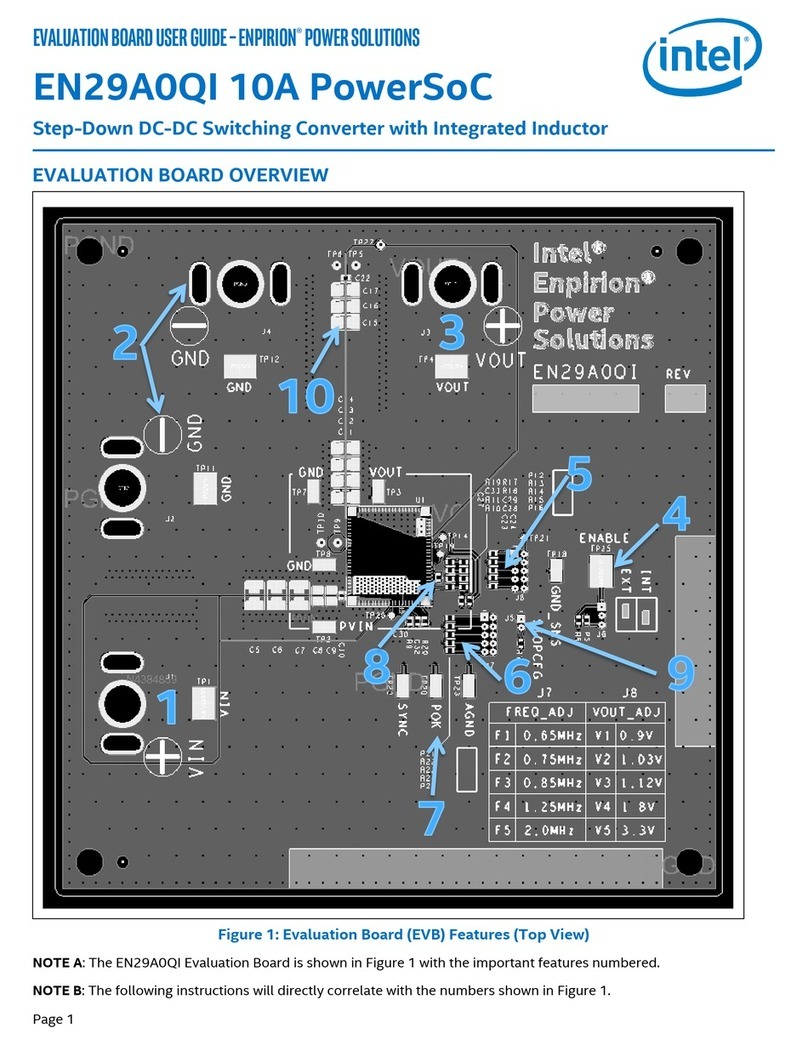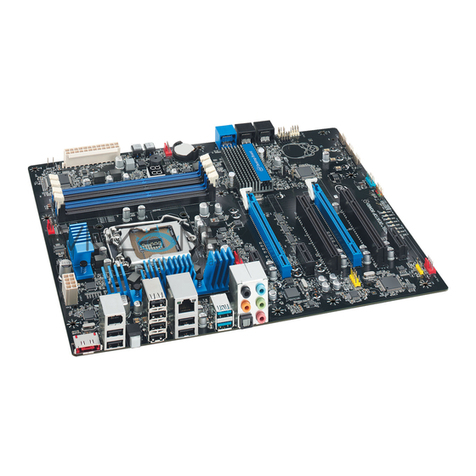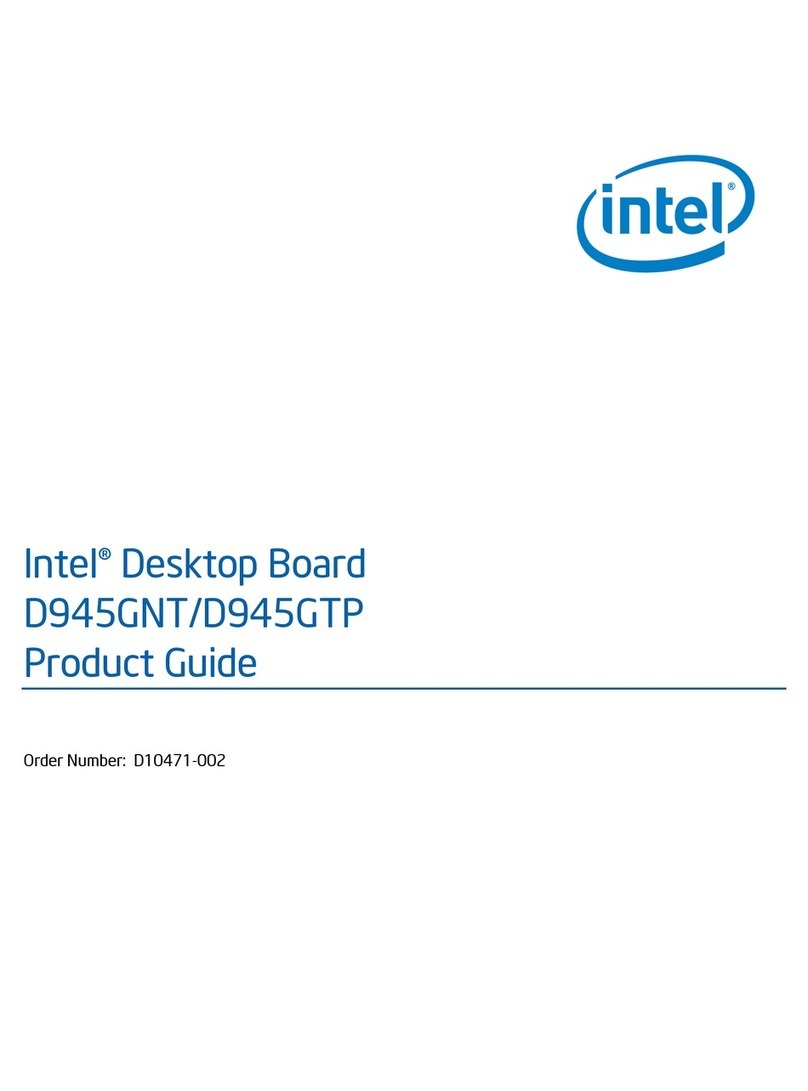
Intel Desktop Board DH77DF Technical Product Specification
viii
2.3Jumper Block.................................................................................. 59
2.4Mechanical Considerations
................................................................ 61
2.4.1Form Factor......................................................................... 61
2.5Electrical Considerations................................................................... 62
2.5.1Power Supply Considerations ................................................. 62
2.5.2Power Supervisor ................................................................. 63
2.5.3Fan Header Current Capability................................................ 63
2.5.4Add-in Board Considerations
.................................................. 63
2.6Thermal Considerations
.................................................................... 64
2.7Reliability ....................................................................................... 67
2.8Environmental ................................................................................ 67
3Overview of BIOS Features
3.1Introduction ................................................................................... 69
3.2BIOS Flash Memory Organization....................................................... 70
3.3Resource Configuration .................................................................... 70
3.3.1PCI Express Autoconfiguration................................................ 70
3.4System Management BIOS (SMBIOS)................................................. 71
3.5Legacy USB Support ........................................................................ 71
3.6BIOS Updates ................................................................................. 72
3.6.1Language Support
................................................................ 72
3.6.2Custom Splash Screen .......................................................... 73
3.7BIOS Recovery................................................................................ 73
3.8Boot Options................................................................................... 74
3.8.1Optical Drive Boot ................................................................ 74
3.8.2Network Boot....................................................................... 74
3.8.3Booting Without Attached Devices .......................................... 74
3.8.4Changing the Default Boot Device During POST ........................ 74
3.9Adjusting Boot Speed....................................................................... 75
3.9.1Peripheral Selection and Configuration .................................... 75
3.9.2BIOS Boot Optimizations ....................................................... 75
3.10BIOS Security Features .................................................................... 76
3.11BIOS Performance Features .............................................................. 77
4Error Messages and Beep Codes
4.1Speaker ......................................................................................... 79
4.2BIOS Beep Codes ............................................................................ 79
4.3Front-panel Power LED Blink Codes.................................................... 80
4.4BIOS Error Messages ....................................................................... 80
4.5Port 80h POST Codes ....................................................................... 81
5Regulatory Compliance and Battery Disposal Information
5.1Regulatory Compliance..................................................................... 87
5.1.1Safety Standards ................................................................. 87
5.1.2European Union Declaration of Conformity Statement................ 88
5.1.3Product Ecology Statements .................................................. 89
5.1.4China RoHS
......................................................................... 92

